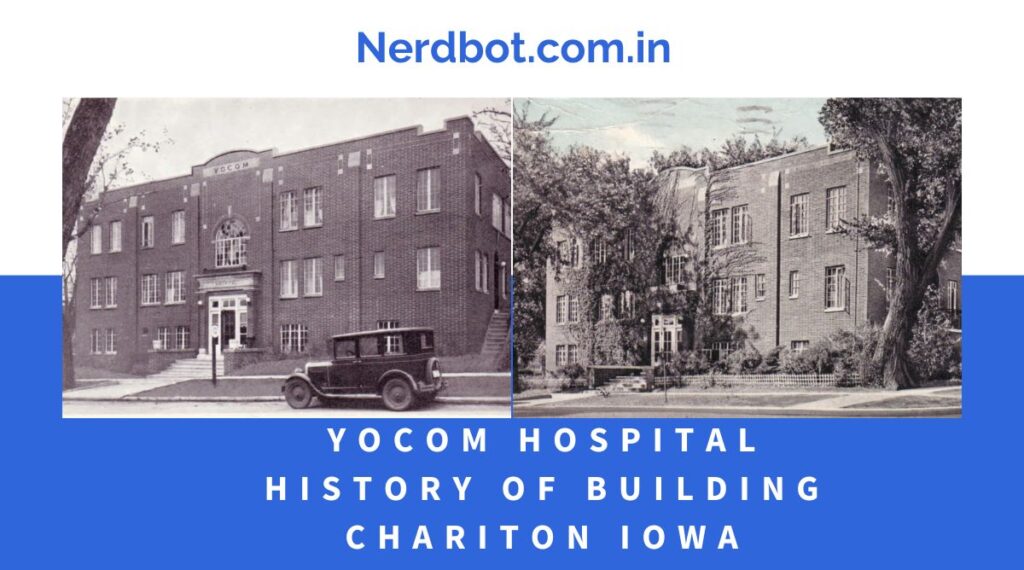
Introduction
The town of Chariton, Iowa, holds a special place in the heart of Lucas County for its historical, architectural, and cultural significance. Among the many structures that dot its landscape, Yocom Hospital stands out not just as a medical institution of the past, but as a symbol of community resilience and evolution. The story of Yocom Hospital is one of transformation—from a bustling healthcare center to a historically preserved site that continues to attract attention from preservationists, local historians, and former residents alike.
The Foundation of Yocom Hospital
Yocom Hospital was built in the early 20th century, during a time when small towns across the United States were investing in modern infrastructure to meet the growing healthcare needs of their communities. Chariton, the county seat of Lucas County, was no exception. Dr. E.C. Yocom, a prominent physician in the region, recognized the urgent need for a dedicated medical facility and led the charge to establish what would become a local landmark.
The hospital was constructed on a parcel of land close to the heart of the town. With a multi-story brick design, the building was equipped with the best technology available at the time. Yocom Hospital featured private and semi-private rooms, surgical suites, and maternity wards, enabling it to serve a wide spectrum of medical needs.
Community Impact and Growth
During its peak operational years, Yocom Hospital was the primary healthcare provider for Chariton and surrounding communities. Local physicians, nurses, and support staff played essential roles in delivering both emergency and long-term medical services. Generations of local families have stories connected to the hospital—births, recoveries, surgeries, and sometimes the difficult farewells.
The hospital was not only a medical hub but also a critical employer in the area. Its staff of doctors, nurses, janitorial teams, and administrators contributed to the local economy, and its presence instilled a sense of modernity and security among Chariton residents.
Architectural Significance
The architecture of the Yocom Hospital building itself deserves attention. Constructed in the Colonial Revival style—a popular architectural theme in the United States during the early 1900s—the structure boasted symmetrical facades, tall columns, and detailed brickwork. Its stately appearance set it apart from the residential buildings around it and made it a landmark.
The internal design included wide hallways, high ceilings for ventilation, and large windows for natural light—elements that were considered forward-thinking for hospital design at the time. This architectural integrity has played a key role in its later preservation efforts.
Decline and Closure
As healthcare needs evolved and newer facilities were built with updated technologies, Yocom Hospital began to experience operational challenges. By the latter part of the 20th century, more modern hospitals either opened or expanded, providing facilities that far outpaced the aging Yocom building.
Additionally, compliance with federal and state healthcare standards became more difficult for older buildings. Upgrading the infrastructure to meet new codes—particularly concerning accessibility, electrical systems, and patient safety—would have required significant investment. Eventually, the decision was made to close Yocom Hospital.
Its closure marked the end of an era for Chariton. For many, it was not just the shuttering of a building but the loss of a central pillar of the town’s identity.
Preservation and Legacy
After its closure, the future of the Yocom Hospital building remained uncertain. Some advocated for its demolition, citing maintenance costs and safety concerns. However, local historians and community activists rallied to preserve the building, recognizing its historical and architectural value.
Thanks to these efforts, Yocom Hospital has been included in various historical registries and preservation projects. Though not listed on the National Register of Historic Places, it holds significance within local archives and historical societies.
Community-led initiatives have focused on preserving the hospital’s exterior and converting parts of the interior for alternative uses—such as archival storage, community center activities, and educational tours for students learning about Chariton’s past.
Local Lore and Personal Stories
The Yocom Hospital building is rich in oral histories and personal anecdotes. Older residents of Chariton often recount stories of childbirth, injury recovery, or family members treated at the facility. Some even believe the building carries spiritual energy, leading to occasional mentions in local ghost tours and paranormal discussions.
Former nurses and doctors who worked at the hospital have also contributed to its legacy by sharing memories through interviews and memoirs. These accounts add a deeply human dimension to the building’s story, elevating it beyond brick and mortar.
Cultural Importance in Chariton
The Yocom Hospital building now stands as a cultural monument in Chariton. As the city continues to develop, the building serves as a physical reminder of the town’s growth and transformation over the past century. It is part of what makes Chariton unique and contributes to the pride that locals have in their community’s heritage.
The building also helps anchor historical walking tours and is occasionally used during civic events that aim to celebrate the town’s architectural legacy.
Conclusion
The history of Yocom Hospital in Chariton, Iowa, is a narrative of innovation, community service, and resilience. From its early 20th-century beginnings to its legacy as a preserved historical structure, the building encapsulates a century’s worth of Chariton’s aspirations and challenges.
While it may no longer serve as a healthcare institution, its presence continues to provide lessons in architecture, local history, and the importance of preserving community landmarks. For anyone interested in American small-town history, healthcare evolution, or architectural preservation, Yocom Hospital offers a compelling chapter worth exploring.
For more information on Chariton’s history and other landmarks, visit the Chariton, Iowa Wikipedia page.



